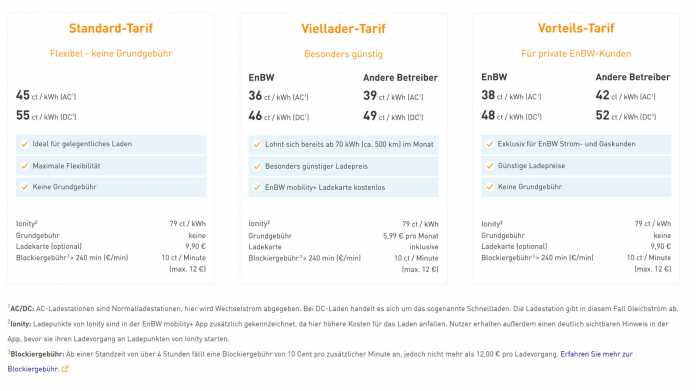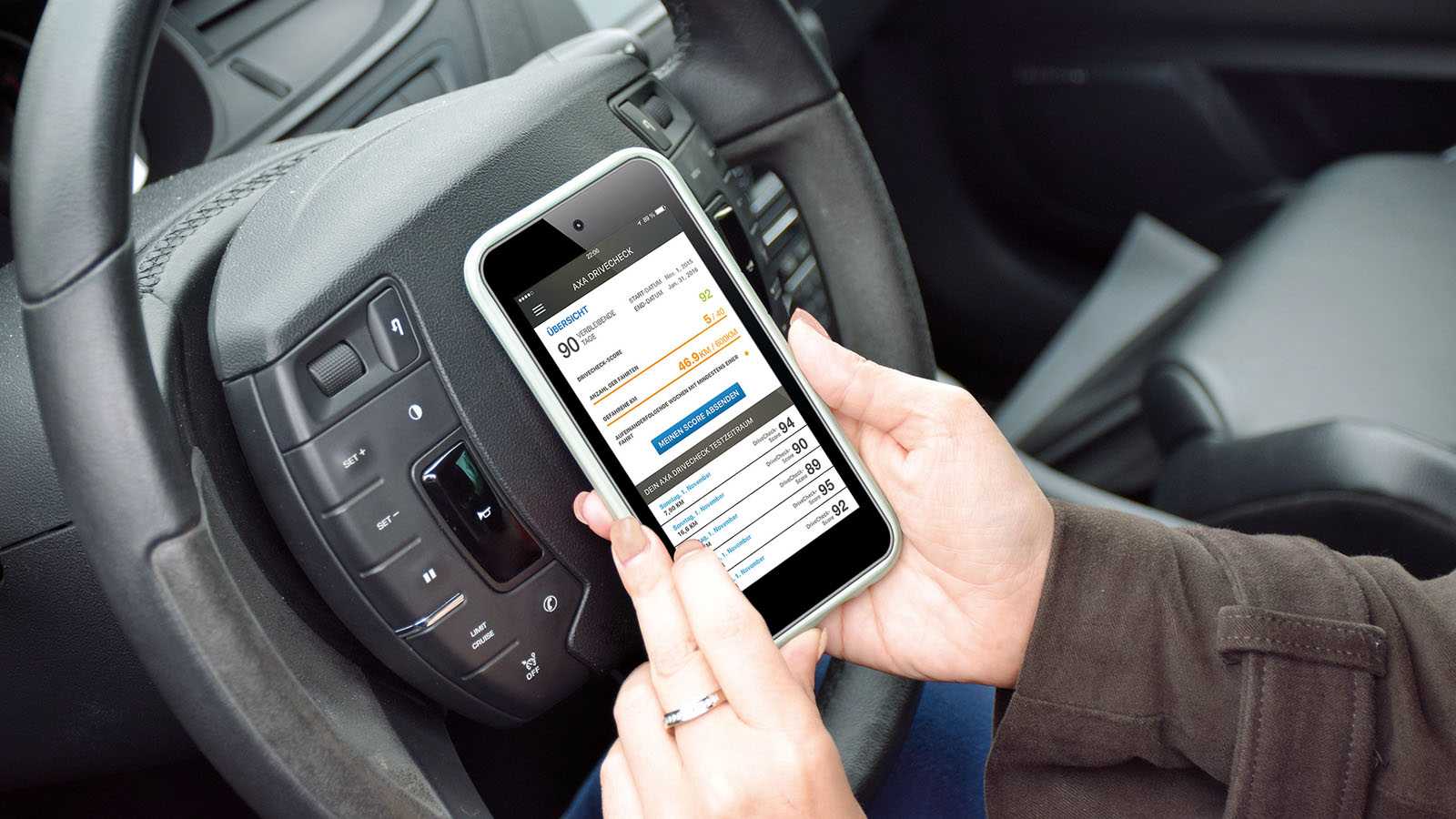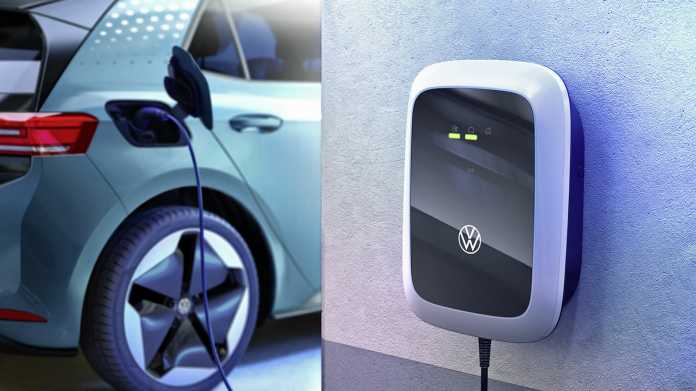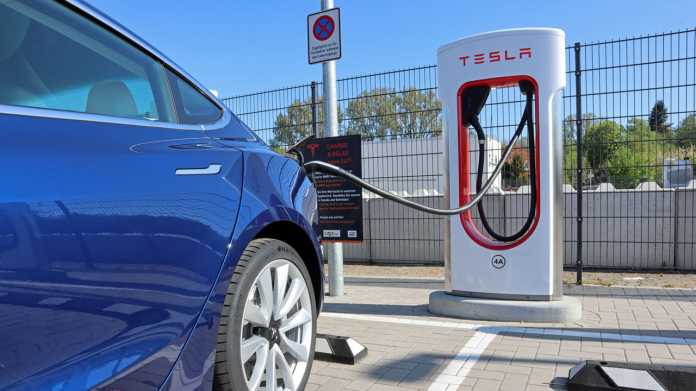Electricity prices at public charging stations are rising sharply. This applies to both leisurely alternating current (AC for Alternating Current) and fast direct current (DC for Direct Current). While the average household electricity price was 32.16 cents per kilowatt hour in 2021 according to the Federal Association of Energy and Water Industries (BDEW), electric car drivers outside of their own garage have to reckon with significantly more.
The operator EnBW started the round of price increases in July 2021. EnBW is important because the ADAC e-charge offer is no different than that of EnBW with a different label. Together, EnBW and ADAC have a large customer base.
Tiered tariff structure
Like most providers, there are different tariffs at EnBW. The structure is representative: the lowest prices are paid by those who are also private customers for household electricity. In this so-called “advantage tariff”, the driving current at EnBW’s own AC columns currently costs 38 cents/kWh and on the DC side 48 cents/kWh. With other operators it is 42 or 52 cents/kWh. Alternatively, there is the “frequent loader tariff”, which costs 5.99 euros per month and pays off from around 70 kWh/month. This reduces the price per kilowatt hour at EnBW to 36 cents at the AC column and to 46 cents at the DC column.

Representative price structure at the industry leader EnBW: There is a relatively low special price for electric car drivers who are also private customers of EnBW. At up to 52 cents per kilowatt hour (Ionity: 79 cents/kWh), it is by no means cheap either. Away from their own garage, electric car drivers have to put up with prices of around 50 cents/kWh.
(Image: EnBW)
Basic fee at Ionity pays off quickly
With Ionity, the fast charging parks of the car industry, it is 79 cents/kWh. Unless the Ionity customer accepts a monthly basic fee of 17.99 euros. Then the price per kWh drops to 0.35 cents. That sounds a lot at first, but this basic fee would pay off from around 41 kWh per month – the comparatively large difference between the tariffs makes it possible.
Anyone who neither wants to pay a monthly basic fee nor is a private customer of EnBW will get the highest tariffs: 45 cents/kWh per kWh on the AC side and 55 cents/kWh on the DC columns. With Ionity it is 79 cents/kWh as usual.
(Image: AXA )
blocking fees
This is also part of practically all charging current providers: there are blocking fees if you stand at a pillar for too long. The fines can be very high. EnBW, for example, charges ten cents per minute if charging lasts longer than four hours; however, there is a maximum amount of twelve euros. Anyone interested should pay close attention to this detail, because this cover is not a matter of course.
As mentioned, EnBW is by no means alone, but an example for the industry. In excerpts: Allego is increasing the prices to up to 69 cents/kWh for high-power chargers with more than 50 kW DC charging capacity. Lichtblick charges household electricity customers a flat rate of 44 cents/kWh for AC columns and 55 cents/kWh for DC columns. For others it is 55 or 75 cents/kWh. Tesla has also increased the rate on the superchargers to around 45 cents/kWh.
So the range is very large. It is imperative that EV drivers compare the different conditions. If you take into account that some people can produce electricity themselves – for example with their home photovoltaic system – the price for electrical energy spreads even further.
Deliberately underestimated
The background to the massive price increases is diverse. The most important thing: At the beginning, the prices were clear lure offers that never covered costs. The infrastructure operators (technical jargon CPO for Charge Point Operator) have always made this clear and complained. In background discussions, it was often said that an adequate existence would only be possible between 50 and 60 cents per kWh in connection with a minimum load.

Ionity, a fast charging network on motorways that is maintained by an industry joint venture, is particularly expensive. The tariffs are only tolerable if a contract is concluded with one of the companies involved, such as Volkswagen.
(Image: Christoph M. Schwarzer)
The so-called EMPs (e-mobility providers), who do not operate a charging infrastructure themselves and have to pay roaming fees, are at a disadvantage. But the CPOs also ask for them among themselves, which explains the top prices at Ionity. It is also important that the operators at the charging points have to pay all taxes and duties that are also required for household electricity. Among other things, the EEG surcharge and the grid fees add up to the actual electricity production price. However, there are also parameters that could theoretically lead to dampening or even a drop. The EEG surcharge in 2022 is only 3.72 instead of 6.5 cents/kWh in the previous year. It is to be abolished entirely in 2023.
Revenue from GHG quota trading
The income from trading for the requirements from the greenhouse gas reduction quota (RED II), which has to be raised by the mineral oil companies, would also have to be particularly serious. Industry insiders report six to 15 cents/kWh flowing into the coffers of the CPOs.

Johannes Pallasch from the federally owned National Control Center for Charging Infrastructure demands: “This additional income must be passed on to customers quickly via the electricity price at the charging stations. The increasing competitive pressure at the charging stations will also ensure this.” The national control center also wants to ensure this competition: 1000 locations for DC charging parks are advertised as part of the Germany network. Their assignment and design is intended to prevent the formation of oligopolies.

At around 45 cents per kilowatt hour, Tesla’s superchargers have also become more expensive; compared to most others it is still rather cheap here.
(Image: Christoph M. Schwarzer)
However, EnBW is not interested in this approach. At the request of heise/Autos it says: “EnBW participates in the marketing of the GHG quota of the charging current it provides. EnBW invests the proceeds in the further expansion of the nationwide public fast charging infrastructure.” Electric car drivers can therefore still not count on falling prices. As a result, it seems as if the behavior of the smartphone tariff providers paired with that of the mineral oil industry in the public charging infrastructure. If you’re not careful, you’ll pay more.
(mfz)
